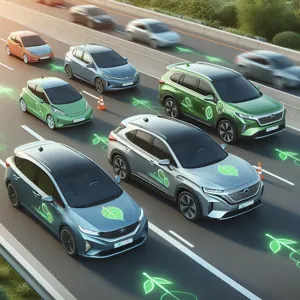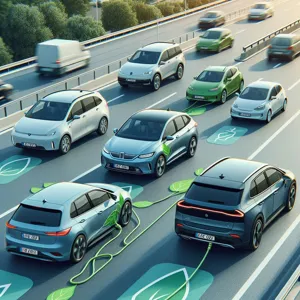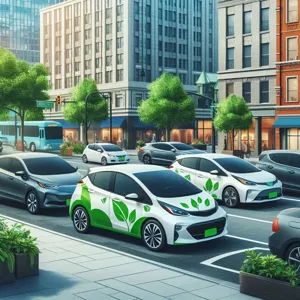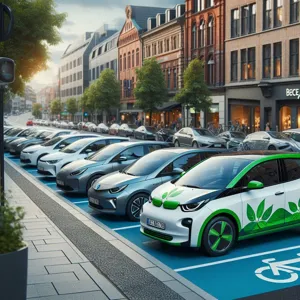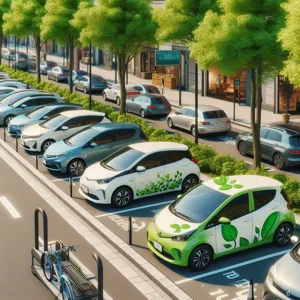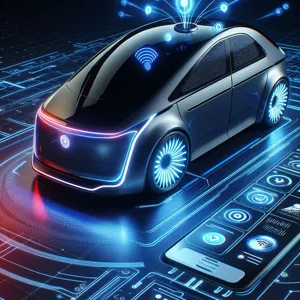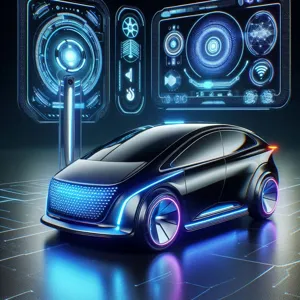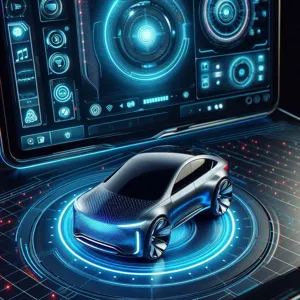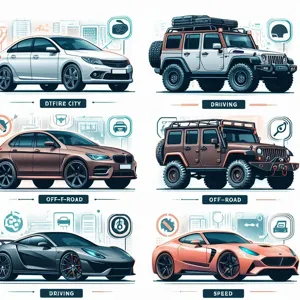Choosing the right car is more than just a decision; it’s a significant milestone that can shape your daily life, commute, and adventures for years to come.
With an overwhelming array of options available—from compact sedans to rugged SUVs, and eco-friendly hybrids to high-performance sports cars—finding the perfect vehicle can feel like navigating a maze. Whether you’re a first-time buyer or looking to upgrade, understanding your needs, budget, and lifestyle is essential in making an informed choice. This guide aims to illuminate your path, offering practical tips and insights to help you evaluate what you truly desire in a car. We’ll explore key factors such as safety features, fuel efficiency, and technological advancements, ensuring you feel confident and excited about your future on the road. Buckle up as we embark on this journey to discover how to choose the perfect car that aligns with your aspirations and enhances your driving experience!
1. Understanding Your Needs: What to Consider Before Buying

When it comes to choosing the perfect car, understanding your needs is the cornerstone of a satisfying purchase. Before you even step foot in a dealership or start browsing online listings, take a moment to reflect on your lifestyle and how a vehicle fits into it. Start by considering how you intend to use the car. Are you looking for a reliable daily commuter for your long work commute, a spacious family vehicle for weekend road trips, or perhaps a sporty hatchback that emphasizes fun and agility?
Next, think about the size and capacity you require. Do you often travel with passengers or cargo? If so, a spacious SUV or minivan might be ideal. Conversely, if you primarily drive solo or with one other person, a compact car could save you money on fuel and parking. Additionally, consider your climate. If you live in an area with harsh winters, a vehicle with all-wheel drive might be necessary, while those in warmer climates might prioritize air conditioning and sunroof options.
Budget is another critical factor to weigh. While it’s easy to get swept up in the allure of shiny new models, establishing a clear budget will prevent you from overextending financially. Remember to account for insurance, maintenance, fuel, and potential financing costs.
Lastly, don’t overlook your personal preferences. Do you have a brand loyalty, or are there specific features that excite you—like advanced safety technology, entertainment systems, or eco-friendly options? By taking the time to understand your needs and preferences, you’ll be better equipped to navigate the myriad choices available and ultimately select a vehicle that enhances your life rather than complicates it.
2. Setting a Realistic Budget: How Much Can You Afford?
When embarking on the journey to purchase a new car, the first crucial step is setting a realistic budget. Understanding how much you can afford not only helps narrow down your options but also ensures you make a financially sound decision that won’t lead to buyer’s remorse down the line.
Begin by evaluating your current financial situation. Take a close look at your income, monthly expenses, and any existing debt. A good rule of thumb is to allocate no more than 15% of your monthly income to your car payment. This percentage allows you to maintain a healthy balance between your car expenses and other financial obligations. Don’t forget to consider additional costs associated with owning a vehicle, such as insurance, maintenance, fuel, and registration fees, which can significantly affect your overall budget.
Next, consider whether you want to buy new or used. New cars typically come with a higher price tag but offer the latest features and warranties, while used cars can provide excellent value, especially if you’re willing to do a little research and potentially roll up your sleeves for minor repairs. Depending on your choice, your budget will vary considerably.
Also, think about financing options. Research pre-approval rates from banks or credit unions to understand what interest rates you might qualify for. This knowledge not only empowers you to negotiate better terms with dealerships but also gives you a clearer picture of how much car you can afford.
Lastly, be mindful of the temptation to stretch your budget for that shiny, top-of-the-line model. Stick to your financial plan, and remember that a wise decision today can lead to greater financial freedom tomorrow. By setting a realistic budget, you’ll not only steer clear of financial strain but also enjoy your new car with peace of mind, knowing it fits comfortably within your lifestyle.
3. New vs. Used: Weighing the Pros and Cons

When it comes to choosing the perfect car, one of the most crucial decisions you’ll face is whether to invest in a new or used vehicle. Each option comes with its own set of advantages and drawbacks, making it essential to weigh them carefully to align with your personal preferences, budget, and lifestyle.
**New Cars: The Allure of Fresh Beginnings**
Opting for a new car often means driving off the lot in a vehicle that embodies the latest technology, safety features, and fuel efficiency. New cars typically come equipped with comprehensive warranties that cover repairs for several years, providing peace of mind and minimizing unexpected expenses. Additionally, the thrill of being the first owner and customizing your car to fit your unique style can be a significant draw. However, this pristine ownership experience comes at a cost. New cars depreciate rapidly, losing a considerable percentage of their value the moment they leave the dealership—often around 20% in the first year alone.
**Used Cars: The Smart Alternative**
On the other hand, used cars present a compelling case, especially for budget-conscious buyers. With a plethora of options available, purchasing a pre-owned vehicle allows you to access a broader range of models, often at a fraction of the original price. You can often find a well-maintained used car that still has plenty of life left, and with depreciation already factored in, you may avoid the steep initial financial hit associated with new vehicles. However, the used car market does have its pitfalls. Buyers must be diligent about inspecting the vehicle’s history, potential repairs, and the possibility of hidden defects.
**Finding Your Balance**
Ultimately, the decision between new and used boils down to your individual circumstances. If you value the latest features, a full warranty, and the satisfaction of having a brand-new car, then a new vehicle might be worth the investment. Conversely, if you’re looking for a more economical option and can accept a few minor wear-and-tear imperfections, a used car could be the perfect fit. Regardless of the path you choose, thoroughly researching and evaluating your options will help you navigate this crucial decision with confidence and make a choice that suits your needs for years to come.
4. Researching Different Car Types: Sedans, SUVs, Trucks, and More
When it comes to selecting the ideal vehicle, understanding the various car types available is crucial. Each category serves distinct purposes and caters to different lifestyles, so doing your homework can save you time, money, and frustration in the long run. Let’s delve into the most popular types of vehicles—sedans, SUVs, trucks, and more—to help you make an informed choice.
**Sedans** are often the go-to for those who prioritize efficiency and comfort. With their sleek design and typically better fuel economy, they are perfect for daily commutes and city driving. Sedans offer a smooth ride, ample trunk space, and a range of features, making them suitable for individuals and small families alike. Models like the Honda Accord or Toyota Camry are known for their reliability and longevity, making them a smart investment.
**SUVs (Sport Utility Vehicles)** have surged in popularity thanks to their versatility and spacious interiors. They’re ideal for families or anyone who needs extra room for passengers and cargo. SUVs often come with higher ground clearance and all-wheel drive options, making them well-suited for both urban environments and rugged terrains. Brands like Ford and Subaru offer a variety of models that combine power and practicality, appealing to those who enjoy adventure without sacrificing comfort.
**Trucks**, particularly pickup trucks, are synonymous with strength and utility. If you require a vehicle for heavy towing, hauling equipment, or off-road capabilities, a truck is likely your best bet. With robust engines and customizable beds, trucks like the Ford F-150 or Chevrolet Silverado are built to handle demanding tasks while providing a rugged driving experience. Additionally, modern trucks often come equipped with advanced technology and luxury features, making them a versatile choice for both work and play.
Beyond these three categories, there are **hatchbacks**, **coupes**, and even **electric vehicles** to consider. Hatchbacks offer practicality with their rear door and foldable seats, while coupes deliver a sporty aesthetic without compromising on performance. Meanwhile, the rise of electric vehicles is reshaping the automotive landscape, with models like the Tesla Model 3 or the Chevrolet Bolt appealing to eco-conscious drivers seeking sustainable alternatives.
As you research different car types, think about your personal lifestyle, driving needs, and budget. Each vehicle class offers unique advantages and drawbacks. By taking the time to explore your options and assess how each type aligns with your daily routine and long-term goals, you’ll be well-equipped to navigate the complexities of car buying and ultimately choose the perfect vehicle for your future.
5. The Importance of Fuel Efficiency: Calculating Long-term Costs

When it comes to choosing the perfect car, fuel efficiency often emerges as a pivotal factor that can significantly impact your long-term financial health. While the initial cost of a vehicle is undoubtedly important, overlooking fuel efficiency can lead to substantial expenses down the road. Understanding how to calculate these long-term costs will empower you to make a more informed decision that aligns with your budget and lifestyle.
Start by considering the miles per gallon (MPG) rating of the vehicles on your shortlist. A car that boasts high fuel efficiency will save you money at the pump, allowing you to stretch your fuel budget further. For example, if you drive an average of 15,000 miles a year and select a car that achieves 30 MPG over one that gets 20 MPG, you could potentially save hundreds of dollars annually on fuel costs alone.
To put this into perspective, let’s break it down. With gas prices fluctuating, let’s assume the average price per gallon is around $3.50. A vehicle that gets 30 MPG would require about 500 gallons of fuel to cover 15,000 miles, costing you approximately $1,750 per year. In contrast, a car that only achieves 20 MPG would use about 750 gallons, leading to annual fuel costs of around $2,625. That’s a difference of $875 each year—savings that can accumulate significantly over the lifespan of the car.
Moreover, fuel-efficient vehicles often come with the added benefit of lower emissions, making them a more environmentally friendly option. This not only supports a sustainable future but may also qualify you for tax incentives or rebates, further enhancing your savings.
In today’s market, with advancements in technology, you’ll find a variety of options, from hybrid and electric vehicles to those with traditional gas engines that offer excellent fuel economy. By prioritizing fuel efficiency, you not only safeguard your wallet against soaring gas prices but also position yourself as a conscientious consumer who values both economic and environmental sustainability. Ultimately, understanding the long-term costs associated with fuel efficiency can transform your car-buying experience into a wise investment for the future.
6. Safety Ratings and Features: Prioritizing Your Well-Being
When it comes to choosing the perfect car, prioritizing safety should be at the forefront of your decision-making process. After all, a vehicle is more than just a means of transportation; it’s a sanctuary for you and your loved ones. Before you even step foot in a dealership, take some time to research safety ratings from reputable organizations such as the National Highway Traffic Safety Administration (NHTSA) and the Insurance Institute for Highway Safety (IIHS). These ratings evaluate vehicles on various criteria, including crashworthiness, collision avoidance, and other critical safety aspects.
Additionally, look for cars equipped with advanced safety features that can provide an extra layer of protection. Modern vehicles are increasingly being designed with cutting-edge technologies, such as adaptive cruise control, lane departure warnings, automatic emergency braking, and blind-spot monitoring. These features not only enhance your driving experience but also actively work to prevent accidents before they happen.
Moreover, consider the car’s overall design and structure. Vehicles with a solid frame and crumple zones tend to perform better in crash tests, absorbing energy and protecting occupants. If you have children, you may want to explore models that offer rear-seat reminders and child safety seat anchors, ensuring that your little ones are securely fastened during every journey.
Remember, purchasing a vehicle with high safety ratings and essential features can save lives and reduce the risk of injury. Investing your time in evaluating these aspects will not only provide peace of mind but also ensure that you navigate the roads with confidence, knowing you’ve made a choice that safeguards your well-being. Your car should be a trusted partner on the road, and prioritizing safety will ensure it fulfills that role effectively.
7. The Role of Technology: Infotainment and Driver Assistance Systems

In today’s automotive landscape, technology plays a pivotal role in enhancing the driving experience, making it smarter, safer, and more enjoyable. When selecting your next vehicle, understanding the array of infotainment and driver assistance systems available can significantly impact your decision. These technological advancements have transformed cars into mobile command centers, allowing you to stay connected and navigate with ease.
Infotainment systems have evolved beyond simple radio and CD players. Modern vehicles are equipped with touchscreen displays that integrate seamlessly with your smartphone, offering navigation, music streaming, and hands-free calling at your fingertips. Features such as Apple CarPlay and Android Auto allow you to access your favorite apps, ensuring that your drive is both entertaining and productive. Whether you’re relying on GPS for road trips or curating the perfect playlist for your morning commute, a robust infotainment system enhances your overall driving experience.
On the safety front, driver assistance systems have become crucial in reducing the risks associated with driving. These technologies, often bundled under the umbrella of Advanced Driver Assistance Systems (ADAS), include features such as adaptive cruise control, lane-keeping assist, blind-spot monitoring, and automatic emergency braking. They work together to provide a safety net, alerting you to potential hazards and even intervening when necessary. For instance, if your vehicle detects an imminent collision, it can automatically apply the brakes, reducing the severity of an impact or preventing it altogether.
Moreover, many new cars come equipped with adaptive headlights, parking assist systems, and rearview cameras, all designed to make driving easier and safer in various conditions. As you navigate through the myriad of options, consider how these technological features align with your lifestyle. If you frequently drive in urban settings, features like parking assist can save you time and stress. Conversely, if you embark on long road trips, a reliable infotainment system with navigation capabilities can turn the journey into a more enjoyable experience.
Ultimately, the role of technology in your vehicle choice cannot be overstated. By prioritizing infotainment and driver assistance systems that meet your needs, you not only enhance your driving experience but also invest in your safety and peace of mind on the road. As you explore your options, take the time to test these features in person, allowing you to make an informed decision that aligns with your expectations and preferences.
8. Test Driving: What to Look For During Your Experience
When it comes to test driving a car, the experience goes beyond simply getting behind the wheel and taking it for a spin. It’s your opportunity to truly assess whether a vehicle aligns with your needs, preferences, and lifestyle. To make the most of your test drive, here are key aspects to pay attention to during your experience.
**Comfort and Ergonomics**: As soon as you settle into the driver’s seat, take a moment to evaluate comfort. Is the seat adjustable to suit your height? Do the controls feel intuitive and within easy reach? Pay attention to the material and cushioning of the seat. Whether you’re commuting to work or embarking on a long road trip, comfort is paramount.
**Visibility**: A critical factor that often goes unnoticed is visibility. Before you hit the road, spend a moment checking your sightlines. Are the windows clear? Is there any blind spot that could pose a hazard? During your drive, take note of how easy it is to see other vehicles, pedestrians, and obstacles. A car that allows for good visibility can greatly enhance your confidence and safety on the road.
**Handling and Performance**: As you navigate different terrains, pay attention to how the car responds. How does it handle sharp turns? Is the steering responsive? Notice the acceleration and braking capabilities—do they feel smooth and controlled? This is particularly important if you plan to drive in varied conditions, such as city traffic or mountainous roads.
**Noise Levels**: Listen closely to the sounds inside the cabin. Are you overwhelmed by road noise, or is the ride pleasantly quiet? The level of noise can significantly impact your driving experience, especially on longer journeys, so ensure that it meets your expectations.
**Tech Features**: In today’s digital age, the technology inside your car can be just as important as its physical attributes. Test out the infotainment system—how easy is it to connect your smartphone? Are the navigation and audio controls user-friendly? Evaluate the sound system quality. A vehicle equipped with intuitive tech can enhance your overall driving experience.
**Ride Quality**: Finally, gauge the overall ride quality. Does the car absorb bumps well, providing a comfortable ride? Or does it feel jarring on rough surfaces? A good vehicle should offer a balance between sportiness and comfort, ensuring a pleasurable drive no matter the conditions.
By being mindful of these elements during your test drive, you’ll be better equipped to make an informed decision that aligns with your preferences. Remember, this is not just a casual jaunt—it’s a crucial step in navigating your future and finding the perfect car that fits seamlessly into your life.
9. Reading Reviews and Ratings: Learning from Other Drivers
When it comes to choosing the perfect car, one of the most valuable resources at your disposal is the wealth of reviews and ratings shared by other drivers. In an age where information is just a click away, tapping into the collective experiences of car enthusiasts, everyday commuters, and long-distance travelers can provide insights that specifications and glossy brochures simply can’t match.
Start by visiting reputable automotive websites and forums, where you can find detailed reviews from industry experts as well as candid feedback from actual owners. Look for ratings on various aspects of a vehicle, including reliability, fuel efficiency, comfort, performance, and safety features. Pay attention to common themes in the reviews; if multiple drivers mention a particular issue or highlight a specific benefit, it’s likely worth considering.
Don’t overlook user-generated content on social media platforms and video-sharing sites. Many drivers document their car ownership experiences through blogs, vlogs, and Instagram posts, offering a more personal glimpse into what it’s like to live with a particular make and model. These real-life accounts can help paint a vivid picture of daily usability, maintenance challenges, and long-term satisfaction.
Another useful approach is to check for ratings from organizations such as Consumer Reports or J.D. Power, which conduct thorough assessments based on rigorous testing and customer feedback. These ratings can serve as a reliable benchmark for comparing different vehicles and understanding their strengths and weaknesses.
Ultimately, reading reviews and ratings is not just about gathering information; it’s about learning from the journeys of others. By taking the time to delve into the experiences of fellow drivers, you can make a more informed decision, one that aligns with your lifestyle and expectations. Whether you’re looking for a family-friendly SUV, a fuel-efficient commuter car, or a sporty coupe, the insights you gain from the driving community can be a guiding light on your path to finding the perfect vehicle.
10. Financing Options: Loans, Leases, and Payment Plans
When it comes to financing your new vehicle, understanding your options is crucial in making a decision that aligns with your financial goals and lifestyle. Each financing method—loans, leases, and payment plans—comes with its own set of advantages and considerations.
**Loans:** Opting for a car loan means you’re investing in an asset. With a loan, you borrow money from a bank or a credit union to purchase your vehicle outright. This option often comes with a fixed interest rate, ensuring your monthly payments remain stable over time. As you pay off the loan, you build equity in the car, and once it’s fully paid, it’s yours to keep. However, be prepared for higher monthly payments compared to leasing, and remember that you’ll also be responsible for maintenance and repair costs as the vehicle ages.
**Leases:** Leasing a car is akin to renting; you gain access to a vehicle for a specified period, usually two to three years, after which you return it to the dealership. This option often results in lower monthly payments compared to a loan, making it an attractive choice for those who prefer to drive a new car every few years without the long-term commitment. However, leases come with mileage limits and potential fees for excessive wear and tear, which could lead to additional costs if you’re not careful.
**Payment Plans:** Some dealerships offer in-house financing or payment plans that allow customers to break down the total cost into manageable installments. This can be a flexible option, especially for those with less-than-perfect credit. While payment plans may seem appealing, they can sometimes come with higher interest rates, so it’s essential to read the fine print and understand all terms before committing.
As you explore these financing options, consider your budget, how much you drive, and how long you plan to keep the car. Each choice has its pros and cons, and understanding these nuances will empower you to make a decision that best fits your lifestyle and financial situation. By taking the time to evaluate your options, you can navigate the financing landscape with confidence and choose the path that leads you to your perfect vehicle.
11. Negotiating the Price: Tips for Getting the Best Deal
Negotiating the price of a car can feel daunting, but it’s an essential skill that can save you a significant amount of money. As you step onto the dealership lot or engage in discussions with a private seller, remember that negotiation is not just about haggling over numbers; it’s about building rapport and leveraging information to achieve the best deal possible.
Start by doing your homework. Research the make and model of the car you’re interested in, checking online resources like Kelley Blue book or Edmunds for fair market values. Understanding the average price range for similar vehicles equips you with the knowledge you need to confidently counter any inflated asking prices.
When you’re ready to negotiate, approach the conversation with a friendly demeanor. A positive attitude can go a long way in establishing a good relationship with the seller. Instead of starting with a low-ball offer, consider presenting a reasonable price based on your research. This signals respect for the seller’s position while still advocating for your budget.
Be prepared to walk away if the deal doesn’t meet your expectations. This gives you leverage and demonstrates that you are not desperate to make the purchase. Often, sellers may come back with a better offer when they see you are willing to leave the table.
Additionally, don’t hesitate to ask about available promotions, financing options, or add-ons that could sweeten the deal. Sometimes, a dealer may be willing to offer complimentary maintenance services or a lower interest rate if it means closing the sale.
Finally, be patient and take your time. Negotiating is a process, and the best deals often arise from thoughtful discussions rather than rushed decisions. By following these tips and remaining calm and collected, you’ll be well-equipped to navigate the negotiation process and drive away with a deal you can feel proud of.
12. Choosing the Right Dealership: Reputation Matters
When it comes to purchasing a car, the dealership you choose can significantly impact your overall experience. Reputation matters, and selecting the right dealership is crucial for ensuring you receive not only a quality vehicle but also exceptional customer service. In today’s digital age, information is at your fingertips, making it easier than ever to research and evaluate potential dealerships.
Start by seeking out reviews and testimonials from previous customers. Websites like Google, Yelp, and social media platforms offer a plethora of insights into the experiences of others. Pay attention to recurring themes in the feedback—whether customers praise the responsiveness of the sales team, the transparency of pricing, or the post-sale support. A dealership with a strong positive reputation is likely to provide a smoother, more satisfying purchasing process.
Additionally, consider visiting the dealership in person before making your decision. A welcoming atmosphere, knowledgeable staff, and well-maintained inventory can be indicative of a dealership’s commitment to customer satisfaction. Observe how the staff interacts with you and other customers—do they seem genuinely interested in helping, or are they simply trying to make a sale? The right dealership will prioritize building relationships over pushing products.
It’s also wise to inquire about the dealership’s service department. A reputable dealership should offer reliable after-sales service, including maintenance and repairs. This can save you time and hassle in the long run. Ask about warranty options and how they handle customer concerns, as a good service department will stand behind the vehicles they sell.
Ultimately, choosing the right dealership is about more than just finding the best price. It’s about building a partnership with a trusted source that will be there for you long after you drive off the lot. By taking the time to research and evaluate, you’ll be well-equipped to make an informed decision that enhances your car-buying journey and sets you up for success on the road ahead.
13. Understanding Warranties and Service Plans: Protecting Your Investment
When investing in a car, understanding warranties and service plans is crucial in safeguarding that investment. A car is often one of the largest purchases a person makes, and just like any significant investment, it deserves the protection that comes with comprehensive warranties and service agreements.
Warranties typically cover defects in materials or workmanship, ensuring that if something goes wrong within a specific time frame or mileage, the manufacturer will repair or replace the faulty part at no cost to you. Familiarize yourself with the length and coverage of the warranty; many new cars come with a basic warranty that lasts three years or 36,000 miles, but some manufacturers offer extended warranties providing coverage for up to five years or more.
However, it’s essential not to overlook the importance of service plans. These can cover routine maintenance tasks such as oil changes, tire rotations, and inspections, often at a discounted rate compared to paying out-of-pocket. Service plans can ease the burden of unexpected costs and provide peace of mind, knowing your vehicle is being maintained according to the manufacturer’s specifications, which can also help preserve your warranty.
Before making a decision, take the time to read the fine print of both warranties and service plans. Look for what is included and excluded, and be mindful of any deductibles or service fees that could arise. This understanding can prevent surprises down the road and ensure you’re getting the most value out of your investment.
In conclusion, a thorough grasp of warranties and service plans is not just about protecting your car; it’s about securing your financial future. By being informed and proactive, you can navigate the complexities of vehicle ownership with confidence, knowing that your investment is secure and well-maintained for years to come.
14. Preparing for Ownership: Maintenance and Insurance Considerations
When the excitement of choosing your perfect car begins to settle, it’s essential to turn your attention to the practicalities of ownership—namely, maintenance and insurance. These two aspects play a crucial role in ensuring your driving experience remains smooth and cost-efficient, and understanding them ahead of time can save you significant headaches down the road.
**Maintenance Considerations:**
Regular maintenance is the heartbeat of car ownership. It not only extends the lifespan of your vehicle but also enhances its performance and safety. Familiarize yourself with the manufacturer’s recommended service schedule, which typically includes oil changes, tire rotations, brake inspections, and fluid checks. Keep an eye out for any warning lights on your dashboard, as they often indicate when something needs immediate attention.
Additionally, consider setting up a maintenance budget. This budget should account for routine services and unexpected repairs that may arise. Joining a local automotive club or online forum related to your car model can also provide valuable insights and tips from fellow enthusiasts about common maintenance issues and solutions.
**Insurance Considerations:**
Next, let’s talk insurance—one of the most critical factors in your overall ownership experience. Before you finalize your purchase, research various insurance providers to find the best coverage options for your needs. Factors such as your car’s make and model, your driving history, and your location can significantly influence your insurance premiums.
It’s wise to get quotes from multiple insurers and compare not just the costs, but also the coverage levels, deductibles, and customer service ratings. Consider whether you need comprehensive coverage or if liability insurance will suffice based on your personal circumstances. Additionally, inquire about available discounts—many companies offer reductions for safe driving records, multiple policies, or even for taking a defensive driving course.
By proactively addressing maintenance and insurance considerations, you’re not just preparing for the joys of driving your new car; you’re also laying a solid foundation for a responsible and enjoyable ownership experience. A little planning now can lead to a more seamless and satisfying journey on the road ahead.
15. Making the Final Decision: Trusting Your Instincts and Enjoying the Ride
When it comes to making the final decision on the perfect car for you, trusting your instincts is paramount. After countless hours spent researching models, test-driving various options, and weighing the pros and cons, the moment of truth arrives: it’s time to make a choice. This is where your intuition plays a crucial role. Often, it’s that gut feeling that can guide you toward the vehicle that resonates with you on a deeper level.
Picture yourself behind the wheel, envisioning your daily commutes, weekend adventures, and memorable road trips. Does the car excite you? Does it feel right? Allow yourself to embrace the emotional aspect of this decision, as a car is not just a mode of transportation but an extension of your personality and lifestyle.
Moreover, as you finalize your decision, remember to celebrate this significant milestone. Buying a car is an exciting journey, and it deserves recognition. Whether it’s taking a scenic route home or planning a special outing with friends or family to showcase your new ride, savor every moment of this new chapter.
In the end, your chosen vehicle should be a source of joy and confidence. As you drive off the lot, allow yourself to relish the thrill of the open road and the adventures that lie ahead. Embrace the experience with enthusiasm, and remember: the perfect car is not just about specifications and features—it’s about the freedom it brings and the memories you’ll create along the way. Enjoy the ride!
As we conclude our guide on choosing the perfect car, we hope you feel empowered and informed to embark on this exciting journey. Selecting the right vehicle is more than just a purchase; it’s an investment in your lifestyle and a key to navigating your future. Whether you prioritize fuel efficiency, safety features, technology, or style, the insights and tips we’ve shared will help you make a decision that aligns with your needs and aspirations. Take your time, do your research, and trust your instincts as you explore the options available to you. Ultimately, the perfect car is out there waiting, ready to accompany you on countless adventures ahead. Happy car hunting!













